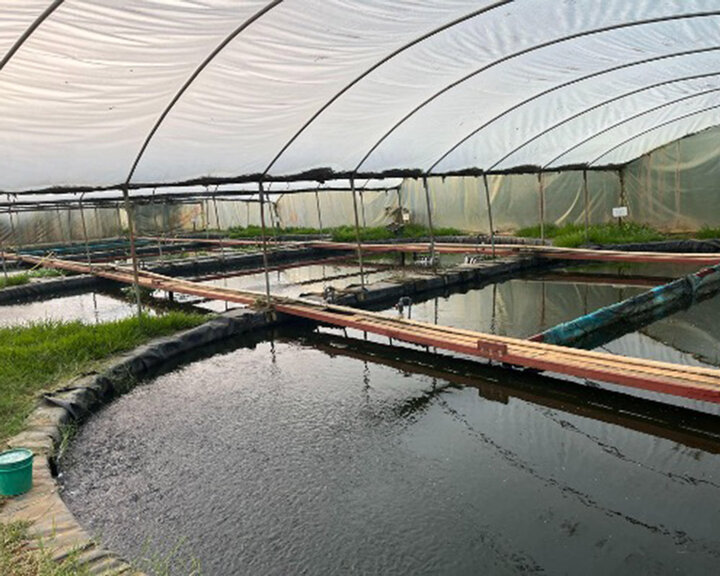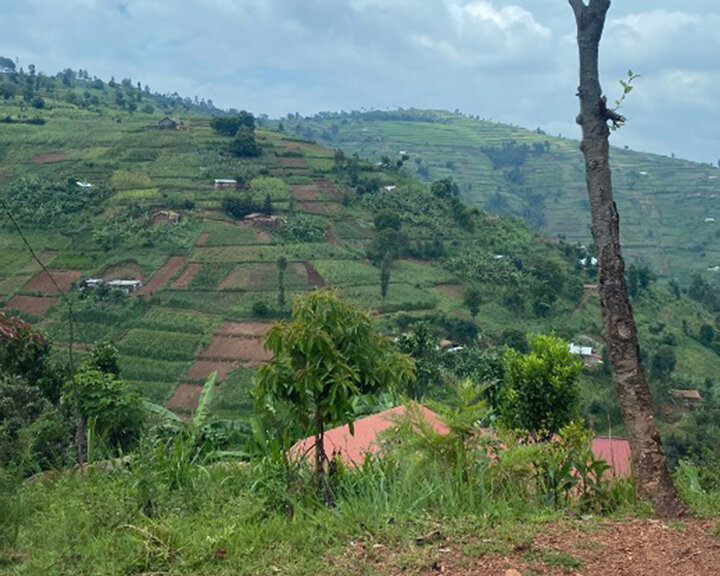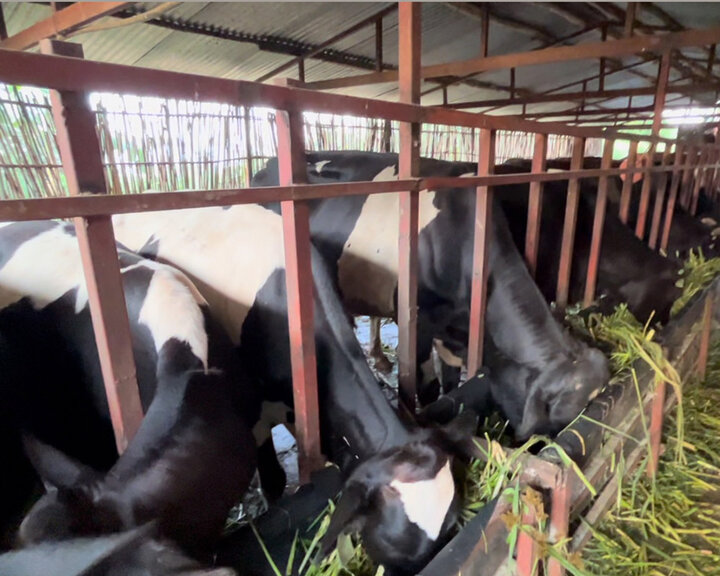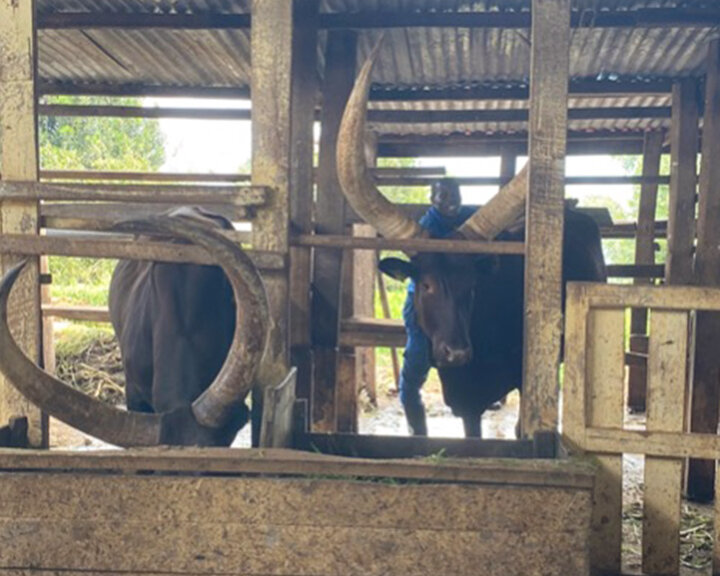Written By: Charlotte Brockman and Adrian Cox
Our first two days in Rwanda can only be described as breathtaking. After landing in the country’s capital, Kigali, we drove out of the city and into the rural landscape of southern Rwanda, where the RICA (Rwandan Institute of Conservation Agriculture) campus is located. There we were introduced to some of the agriculture and innovation that is leading East Africa into the future.
On our first full day, in the evening, we visited the Lakeside Fish Farm on Lake Mirayi by a small town called Mwendo in Bugesera, a district in the Eastern Province of Rwanda. It’s only 3 km away from RICA, so they have a close connection, and RICA students get to tour the farm during the course of their studies as well. The Lakeside Fish Farm is owned and run by Roger and his wife Faith. Roger is from the UK but got his degree in aquaculture from Auburn University, before taking a job in Silicon Valley to provide for his growing family. Once their children were grown, Roger and Faith decided to move to Rwanda; Faith’s country of origin. Although she lived in Uganda for most of her upbringing and traveled around the world (how she met Roger), she had always wanted to return to her homeland. So Roger scouted out a good property in Rwanda with lakefront access so that he could finally live out his fish farm dreams. As for Faith, she had been an art teacher, so she spends her days making beautiful paintings and running a school that she started with Roger to help educate the children in the surrounding area who would otherwise not be given that opportunity. They also make an effort to include the local community through providing jobs. Roger told us that they have 75 permanent employees and that he also hires seasonal workers.
Some of the animals on the farm include: cows, goats, a donkey, and, of course, fish. Roger raises and breeds tilapia and catfish, as well as running a black beetle operation to use as a protein source for his fish. He told us that he bought a donkey to try to introduce pack animals to the community to help with labor, especially carrying heavy loads up and down the many hills, but that the locals did not want to use them because they like to do things by hand as a point of pride. They also grow crops on the farm, and one of the big fields we saw was of chili peppers. The export market in Rwanda for chilies is fairly large, with Europe buying them mostly fresh, and China and India buying them mostly dried and ground. In addition to the chilies, they also grow cabbage, cassava, plantains, potatoes, sweet potatoes, mangoes, and much more. Everything that they eat and serve is grown by them, and they even purify their own lake water, so they are very close to being completely “off-the-grid”.
On our second day in the country, we left RICA to see another enterprise impacting the northern part of the country. After a long windy, uphill drive from Kigali, we came to a stop at Nyirangarama, the home of Sina Gérard’s vast enterprise. We were told that we would be visiting a processing facility, however, what we found was a community involved in building the innovative enterprise into a world-known business. As we pulled up to the main building, at what we thought was the top of a hill, we were met by buses of people and the bustle of vendors. After a quick introduction to the company and learning about its diversity in products including, juice, wine, soap, flour, meat, dairy products, and many others, we again boarded our bus. This time they took us UP the hills; as we climbed, we surely thought the transmission would fall out of our 20-passenger bus, but we persisted until our driver took us to the very top. There we were able to see the vast expanses of growing land used to produce the fruits and vegetables used for the products. The agronomists gave us a tour of the macadamia nuts, oranges, and one small strawberry field. At the top of the hill, we all saw the dairy, which included 15 Holstein cows, four traditional cows, one chicken, and their very own singer. It is a tradition in Rwanda to have someone who sings to the cows to keep them calm and happy. This was one of the many animal facilities owned by the enterprise. Other animals included pigs, pigeons, ducks, a few North American turkeys, and turtles (but just for pets).
The diversity of the enterprise was amazing, but the social impacts of the business were incredible. In addition to sourcing all of this produce locally, the Sina Gérard enterprise employs 1500 people full-time, and 1500 people seasonally. The enterprise also sponsors a school, which offers education at all levels and hosts a technical program to further support the needs of the local community. This may be one of the best examples we have seen regarding sustainable, social entrepreneurship. It is also just one of many enterprises that aim to build the economy of Rwanda, while also giving back to the community. The generosity and innovation have inspired us to look at how we can use our skills to not only help agriculture in the US move forward but also give back to the communities which have given us so many opportunities to succeed.

Picture 1: A look inside the growing areas for young tilapia at different life stages. It is covered to create a greenhouse-like effect, because the growing fish need warmer temperatures. Credit - Adrian Cox.

Picture 3: View of the local smallholder farms and landscape from the top of the Sina Gérard enterprise hill. Credit - Charlotte Brockman.

Picture 2: Roger’s cows eating marshland grass that grows very fast. He said it grows very tall and when you cut it down it will be back up by the next day. Credit - Adrian Cox

Picture 4: Indigenous Rwandan Cows, accompanied by their caretaker and musician. Credit - Charlotte Brockman.